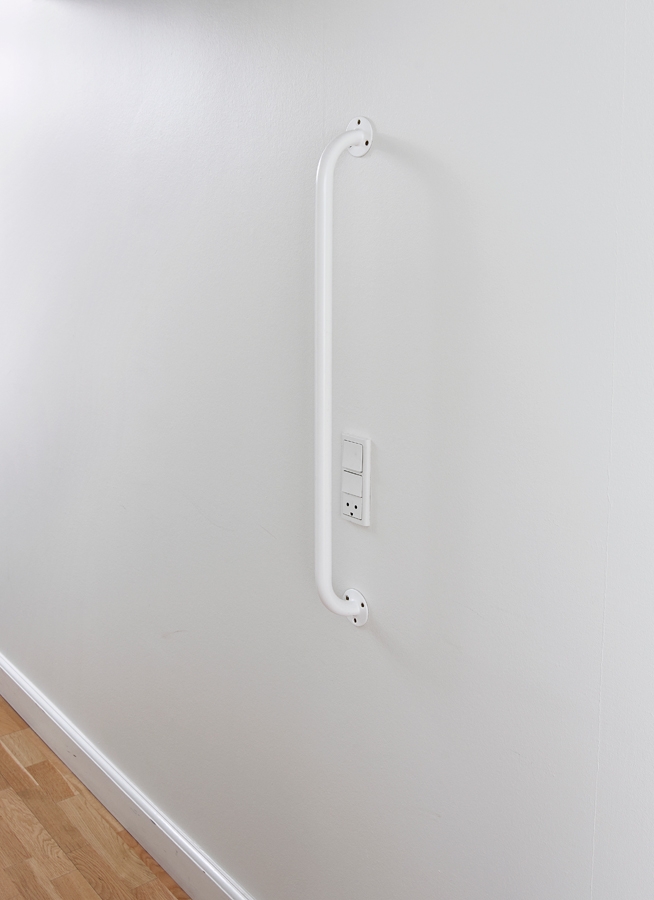I probably should have looked at the email from my colleague a bit closer. Instead I just noted down the address of the Copenhagen hotel, printed out my boarding pass and left the office for the day.
My flight lands around midday. I look up the metro stop (Nørreport) and end my journey, bag in hand, at the reception of the Kong Arthur, a fairly swanky establishment a stone’s throw from the banks of the Peblinge Sø, one of the Danish capital’s three rectangular lakes. I give the receptionist my name. She looks me up on the reservation system, and says, “Oh, you’ll be needing the key.” I nod, in the manner of someone who is not sure how to respond to so obvious a declaration. Perhaps understanding this, she elaborates: “The lift key.” I’m not sure how to articulate a more comprehending nod so I say nothing. “Come with me,” she says. We walk over to the lift together. As we step in, she presses the door-close button and places what seems to be a staff-only key into a slot above the buttons for each of the hotel’s floors. “You turn it like this, and this will then take you to the apartment.” As the lift rises, so does my level of confusion.
We step out beyond the advertised top storey into a small corridor. A pair of musical instruments are placed on a shelf. There’s a door that the receptionist unlocks, leading me into a private apartment. There’s a gouge that runs the length of the wall, mortar dust still evident on the chic wooden floors. Next to the light switch is a handrail; the sort that was installed in my grandma’s house. “The kitchen,” the receptionist announces. It is nice, big: the apogee of Scandinavian-design cool. A Post-It with the wi-fi code sits on the vast central table. Passing a bedroom, we squeeze past an armchair placed in the middle of the passageway. A noise becomes apparent. A radio seems to be tuning itself, restlessly moving from station to station. In a spacious lounge, two wood boards are mounted on opposing walls, half covered in foil, and connected by wires that stretch across the room under a central rug, emerging either side as messy trip hazards. As we enter the last room, the bedroom from which the noise is emitting, the receptionist smiles.
“You can turn it o when you go to sleep, of course.”
“Uh, ok, thanks.”
All becomes a bit clearer when my despairing colleague arrives an hour later. He explains that since 2010 this apartment has doubled as a projectspace programmed by Hans Christian Smed, who invites (mostly) Danish artists and curators to coordinate a revolving series of exhibitions, the space both open to the public during the day and available to rent as accommodation at night. That gouge in the kitchen? That’s an installation, Head to Mouth (all works, 2014), by a Danish artist who goes by the name of Pind. The old bit of rope hung on a screw, next to an empty brass hook in the kitchen? Both by him too, Untitled. As is the placement of the chair, part of an on-going series that attempts to throw the viewer o his pace by skewering – making odd – the everyday. The wall works and rug in the lounge are by FOS. These peculiarities – what would be annoyances in the context of a hotel room or rented apartment – are made normal under the context of art. The shelf with the saxophone and recorder, Swedish Rhapsody, is a collaboration between the two artists.
Not all the exhibitions at the space are site-specific. Sophie Dupont staged a durational performance last summer. Titled Marking Breath (2014), the artist scratched a tally on a sheet of metal for every breath exhaled while remaining at a desk in the apartment from sunrise to sunset. Erika Severin exhibited her intricate War Paper Tapestries (2014) last spring; Mads Lindberg showed a series of abstract, ‘process based’ paintings in 2013, taking over almost every inch of wall space; and Suzette Gemzøe exhibited her dazzling blue abstract watercolours on both paper and fabric, hung from the walls and ceiling, in spring (though the show was titled Blue Pressure of a Chambermaid).
My lack of preparation for encountering FOS and Pind’s exhibition, You Are Welcome, proved enlightening. It allowed these small modifications to one’s everyday knowledge of ‘good’ interior design to be experienced in the rawest sense. I encountered the odd, out-of-place handrail not in the safety of ‘art’ (by FOS, it’s titled Someones Functions Lonely As It May Seem, 2014) but in the cold reality of everyday expecta-tions (cool design and mobility issues don’t go together, the work notes). My lack of expectation also brought into focus the allowances made for art. A cable stretched across the room? Unacceptable in a hotel room, totally allowed once it’s identified as art. That night we go out to a party. I get back late, a bit drunk. I go to the bathroom. As I clean my teeth, leaning slightly on the sink, I stare for an age at an empty toilet roll tube, its holder attached directly to the otherwise magnificent Jacuzzi bath. What a weird place for a hotel to put the toilet roll, I think.
This article was first published in the January & February 2015.
